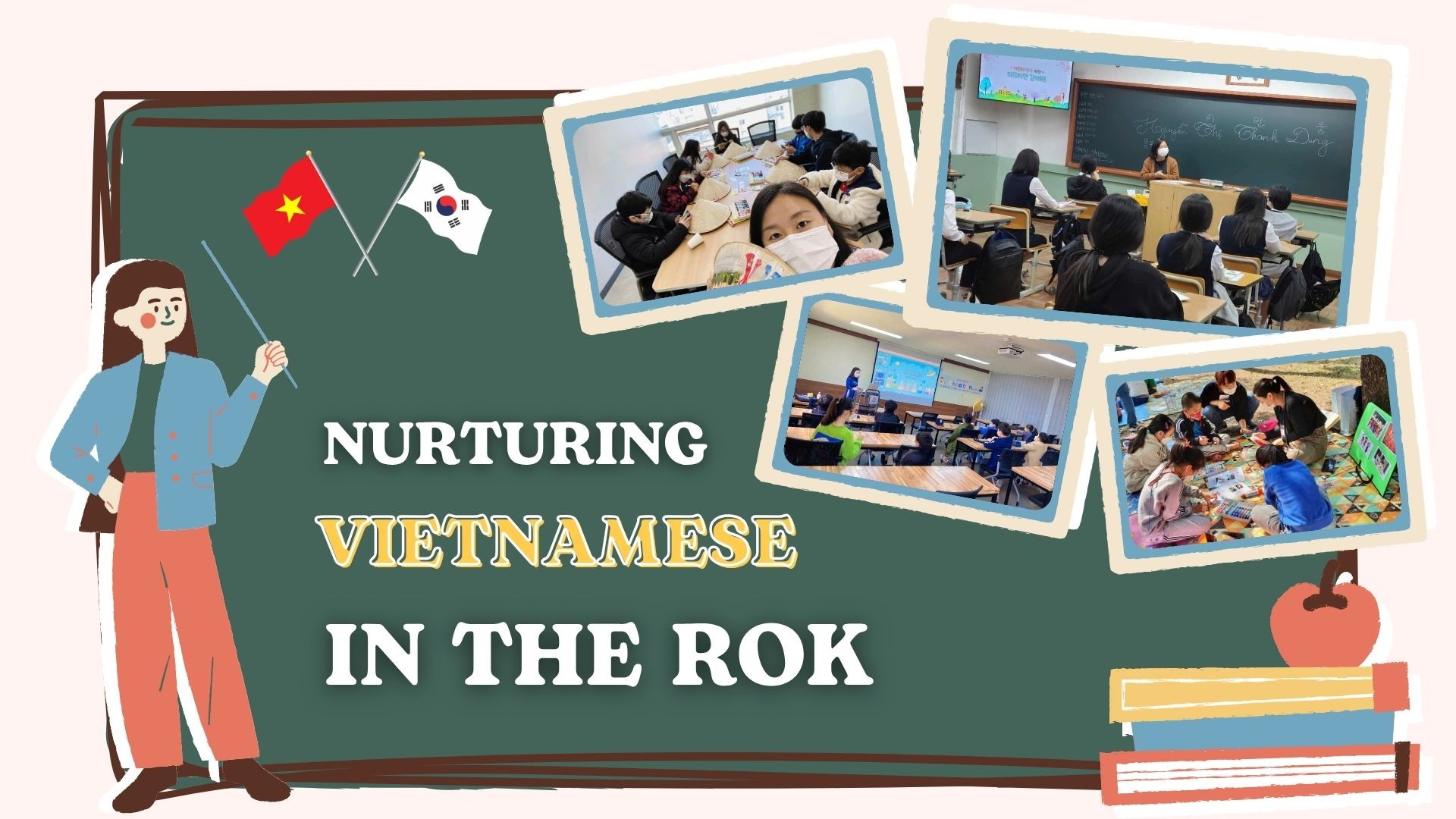 |
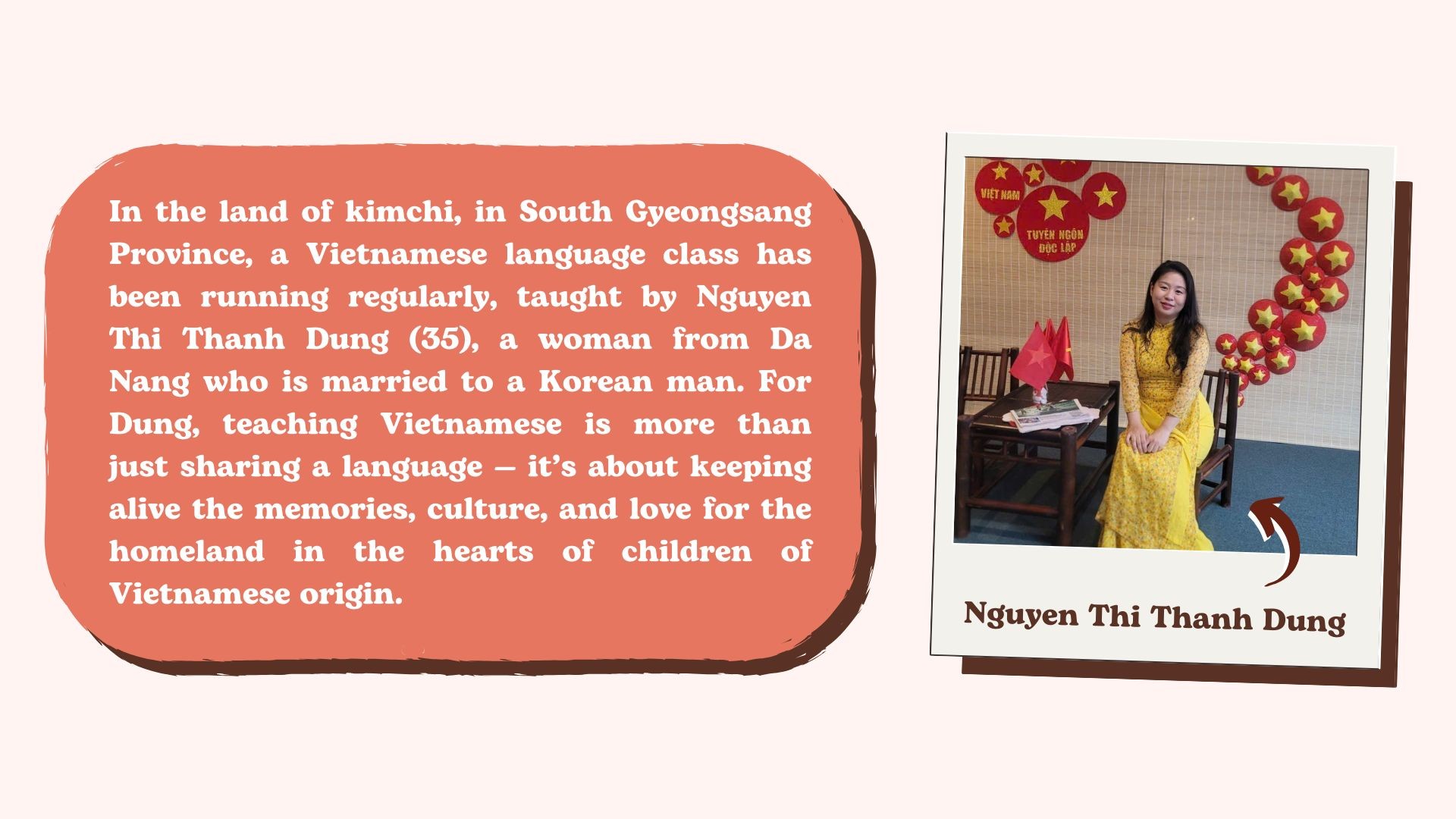 |
 |
“A person has their roots and origin,Just as a tree has its base, a river its source.” |
| This old Vietnamese saying echoes in the Vietnamese language extracurricular class at Sinwol Middle School in Gyeongsangnam Province, RoK. There are seven students aged 11 to 15 attending this class. It has been running regularly for seven months and marks the sixth year that Nguyen Thi Thanh Dung has been devoted to teaching Vietnamese on foreign soil. “Many students feel shy about speaking Vietnamese when talking with friends, or they do not understand what their parents say. I think helping children speak Vietnamese means helping parents and children understand each other better,” Dung shares. With that thought, she joined a bilingual teacher training course at a family support center in the RoK. After completing the course, she was listed by the Gyeongsangnam Provincial Department of Education as a bilingual teacher for public schools and was assigned to teach at several schools in the province. |
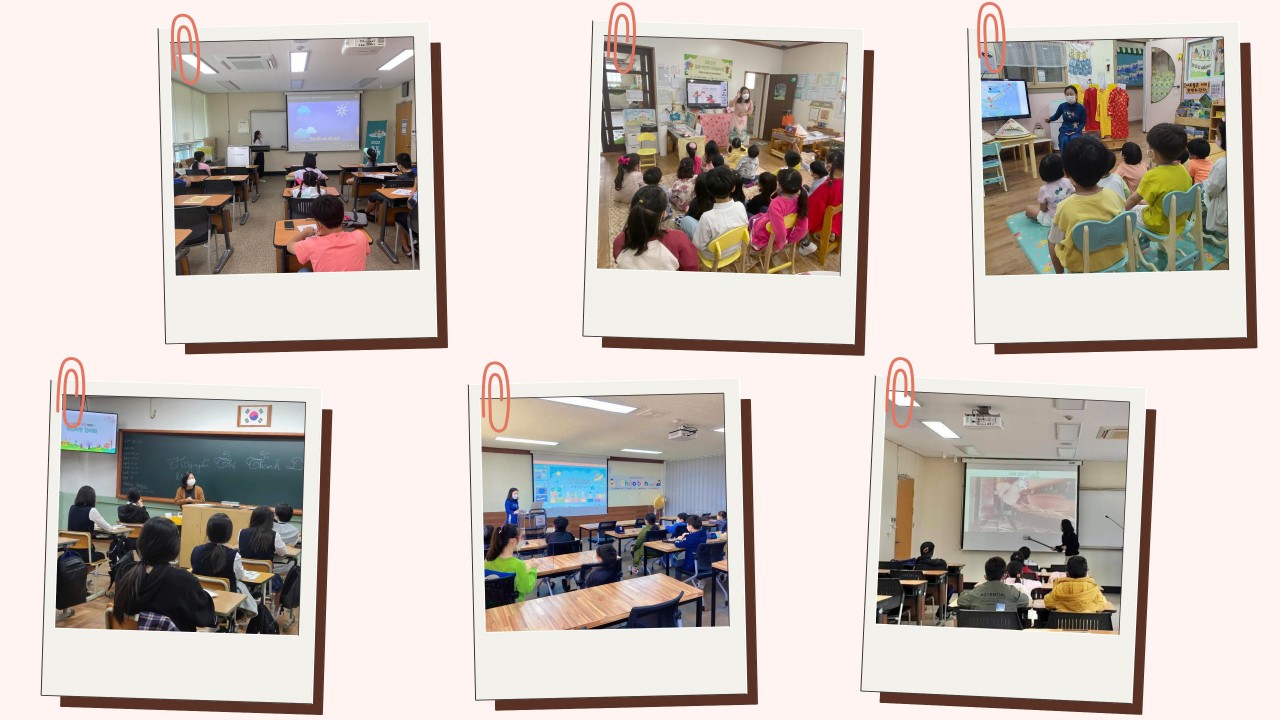 |
| Teacher Dung has been assigned to teach at schools across South Gyeongsang Province, the RoK. |
| Before every new school year, Dung designs her own lesson plans suited to her students’ age and learning capacity. Each lesson is carefully prepared - from content, visuals, and teaching props to hands-on activities. For her, teaching Vietnamese is not only about pronunciation or grammar but also about helping students feel the cultural essence in every lesson. |
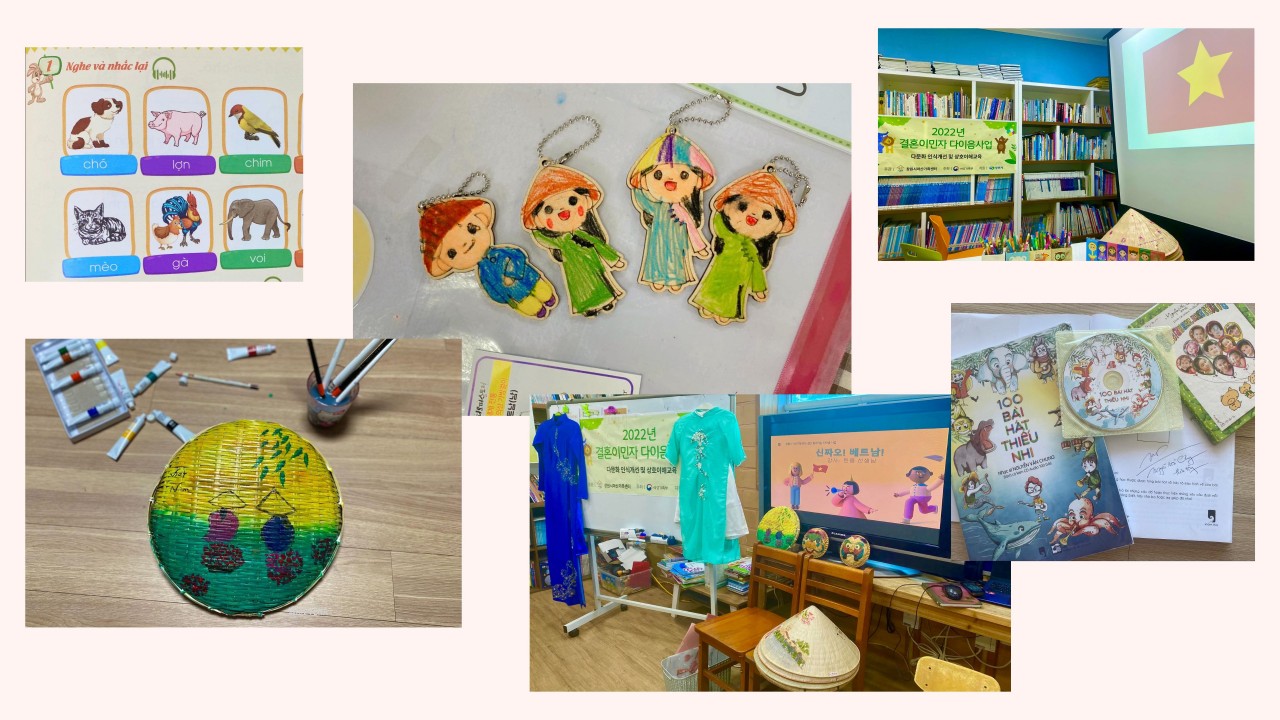 |
| Teacher Dung designs her own lesson plans and prepares teaching materials inspired by Vietnamese culture for her students. |
| When teaching about Dong Ho folk paintings, Dung brings colored ink and printing molds so her students can try them out while learning color vocabulary and the meanings behind traditional images. During the Mid-Autumn Festival, she teaches students to make paper lanterns and read stories about Cuoi and Hang. In food-themed lessons, she introduces pho, chung cake, fried spring rolls, and fresh rolls - dishes tied to the homeland’s memories - to help students understand Vietnamese customs and traditions. |
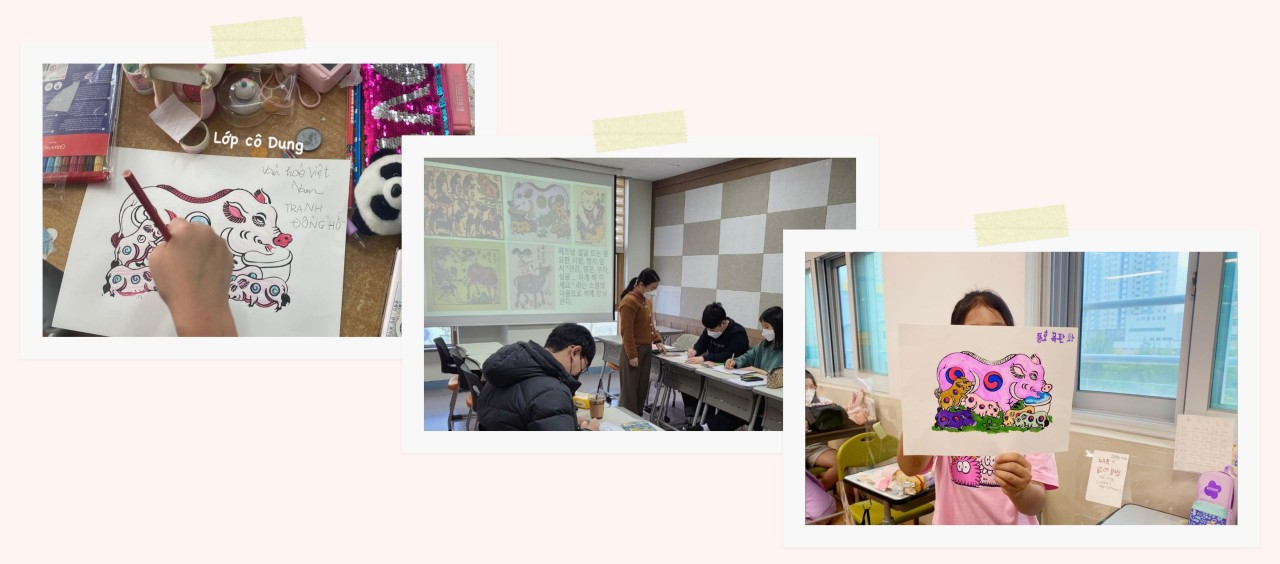 |
| Dung guides her students in making Dong Ho folk paintings. |
| Not only the students but also many Korean fathers in Vietnamese-Korean families join in. They willingly take their children to class at any time, waiting for hours while their children study Vietnamese. They also take part in Vietnamese cultural activities such as making chung cakes, painting folk art, and celebrating Tet. Through these exchanges, many Korean husbands gradually learn to say simple Vietnamese phrases: greetings, thank-yous, or New Year wishes, as a way to bridge the language gap within their families. |
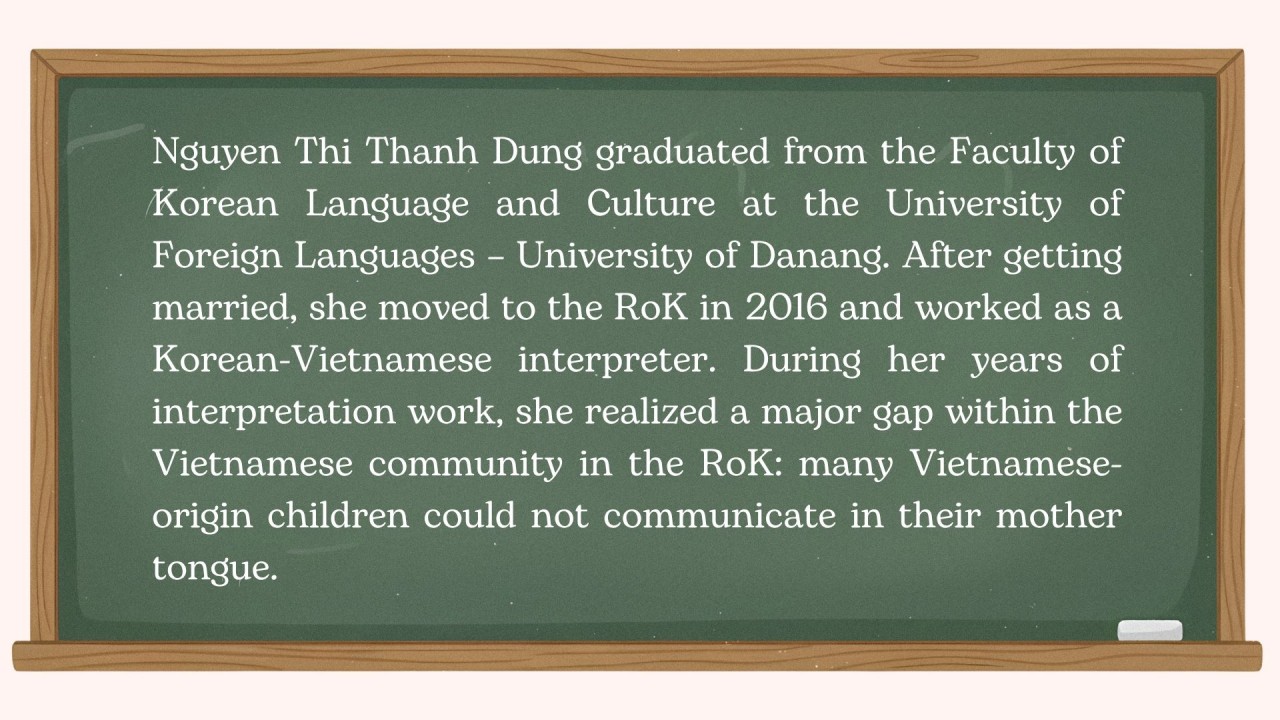 |
 |
| Beyond her teaching hours at school, Dung also spends time giving free Vietnamese lessons at “Lotus Bud House,” a multicultural children’s education center under the “Lotus Village” project, a community initiative founded by Vien Ngo Temple in RoK. Her online class connects Vietnamese-origin students from different parts of RoK. The children join weekend sessions lasting just over an hour, but each one is full of laughter. |
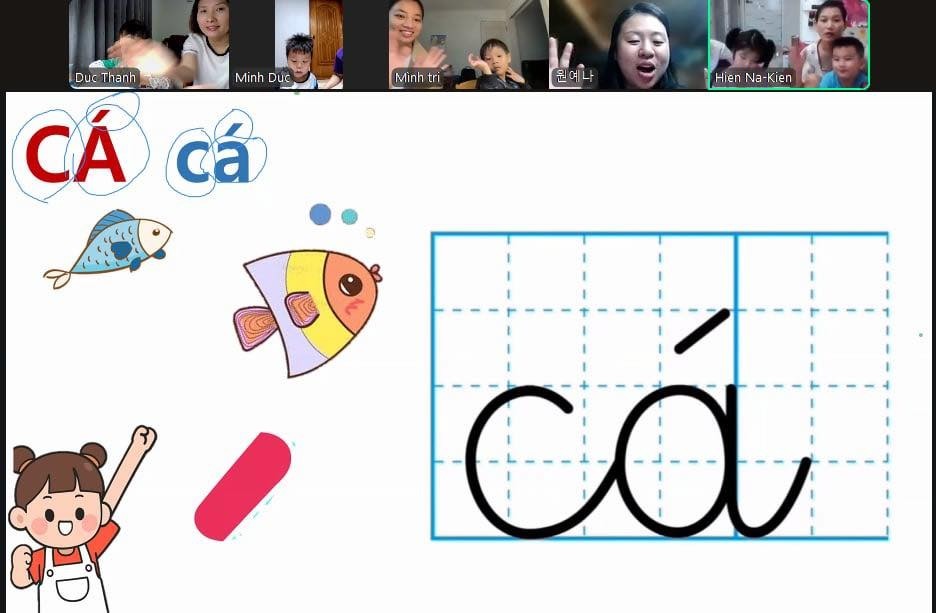 |
| She teaches Vietnamese online at the Lotus Bud House. |
| “The kids already study all week, so when they finally have free time, they just want to relax and play. That’s why I have to make the lessons diverse and fun, combining learning with games so they enjoy coming to class. The most important thing is to help them understand why learning Vietnamese matters—to see it as something familiar and lovable—because it’s the thread that connects them with their parents and homeland,” Dung says. After years of teaching, what makes Dung happiest is seeing her students speak Vietnamese more naturally. Many who were once shy can now read Vietnamese folktales clearly and confidently. “One girl told me proudly after visiting Vietnam: ‘Now I don’t need Mom to translate for me when talking to Grandma and Grandpa anymore!’ Many parents also call or text me to share happy moments. One mother said her son suddenly told her, ‘Thank you, Mom,’ and ‘I’m sorry, Mom,’ in Vietnamese. She said those simple words moved her to tears.” “When I hear stories like that, I feel so happy. Seeing the children confidently use Vietnamese is like watching them reconnect with their roots. Those simple sentences give me great motivation. I think when they grow up, they may forget many things, but as long as they keep the Vietnamese language, they will always remember they are Vietnamese,” Dung shares. |
 |
| Dung instructs her students in hands-on craft activities. |
| In addition to teaching Vietnamese to other children in RoK, Dung also preserves the language in her own home. Her three children speak only Vietnamese with their mother and Korean with their father. “I want them to feel Vietnamese is as natural as breathing. At home, we talk in Vietnamese, watch Vietnamese movies, and listen to Vietnamese children’s songs so they can feel that familiar rhythm,” she says. Her husband, a Korean, fully supports her in teaching the children Vietnamese. He helps her prepare lessons, print illustrations, and even review short Vietnamese folk verses with the kids. |
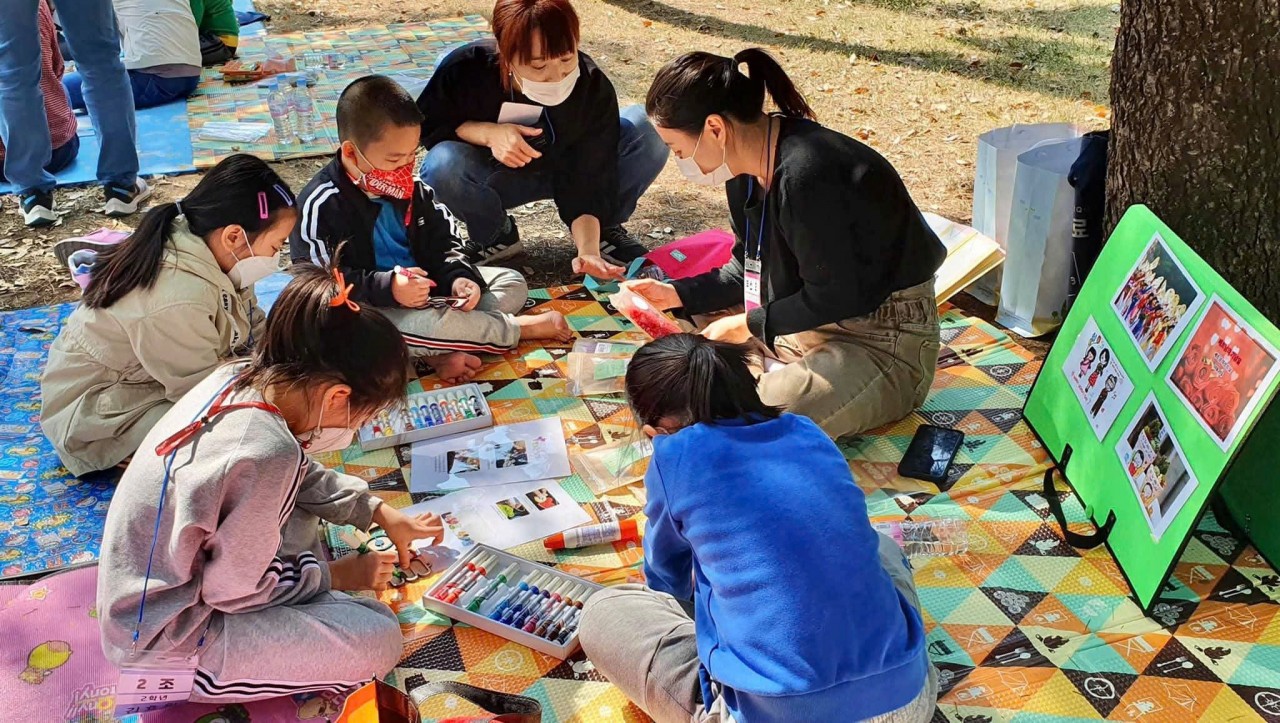 |
| She helps her students learn about traditional Vietnamese holidays. |
| Talking about her plans, Dung shares that she dreams of building a Vietnamese library for children of Vietnamese origin in her community. In a small room converted from a common living space, she has already organized a few storytelling and short film sessions in Vietnamese. These early gatherings received positive feedback from parents, many of whom hope the model can continue regularly and become a cultural hub where children not only learn Vietnamese but also feel proud of their heritage. “I want to build a small corner that keeps the Vietnamese soul. Just a few shelves of books and some children’s stories can already help plant the seeds of our mother tongue in their hearts,” Dung says. She hopes that in the future, more community organizations and Vietnamese representative offices in RoK will join hands to organize more Vietnamese classes, small libraries, and cultural exchange activities. |
| Written and Designed by Mai Anh. |